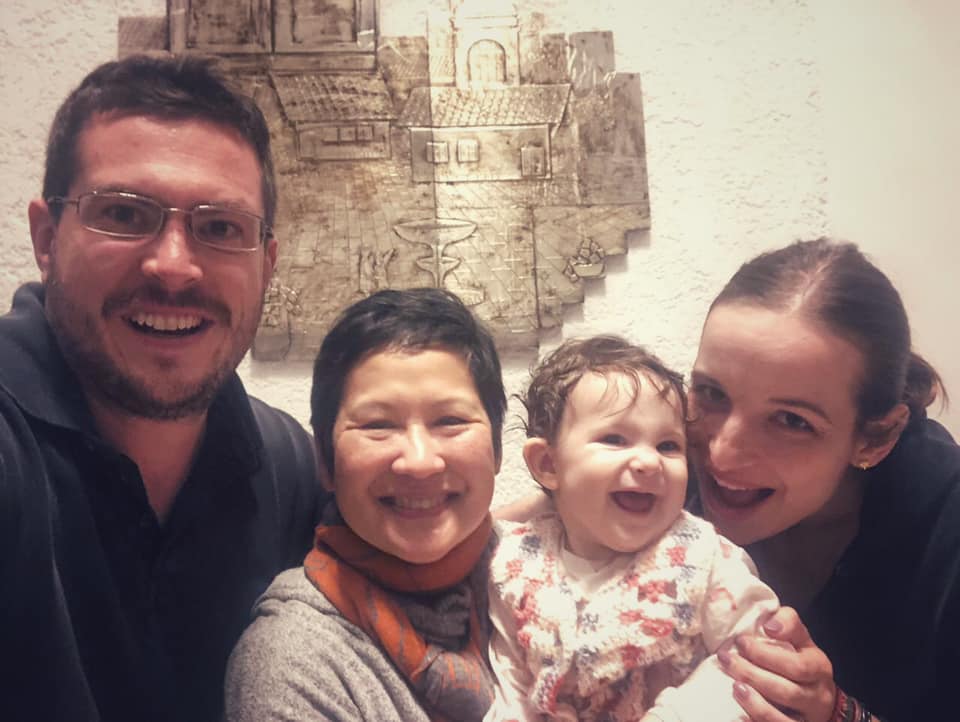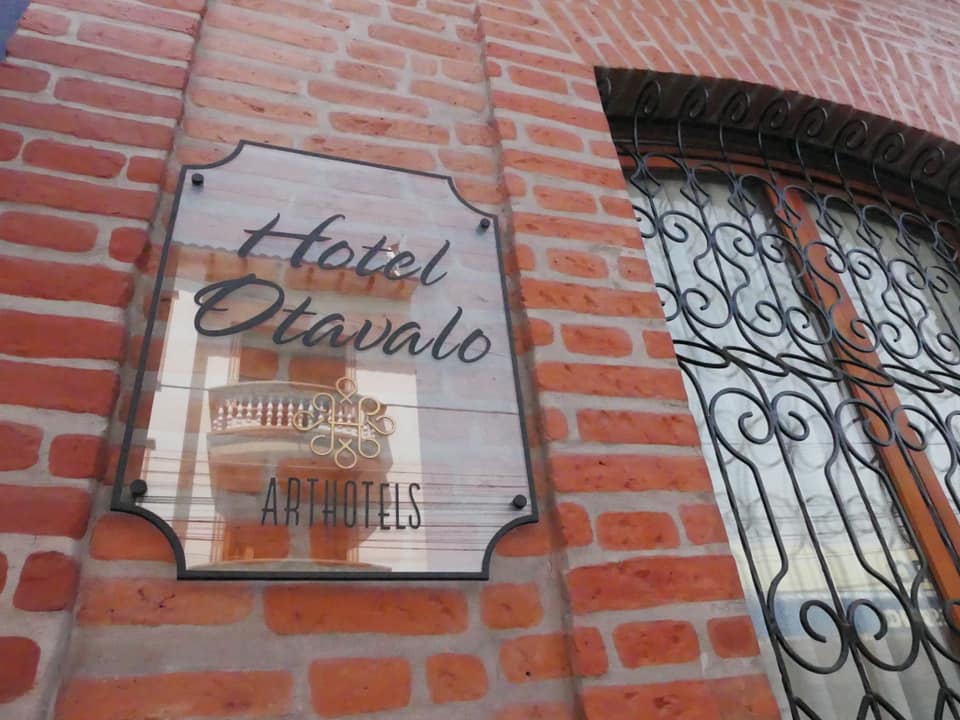Scrapbook: Day Trips From Quito, Ecuador
/Earlier this year, I spent six weeks in Quito focused on improving my Spanish (see earlier post here). School and work kept me in the city during the week, but on weekends, I often tagged along with friends and their families on road trips north and south of the capital. And you can tag along with me.
The Galapagos (600 miles off the western coast) gets all the glory, but there’s much to see on the mainland. In fact, there’s much to see and do within a 50-mile radius of Ecuador’s capital of Quito, which is as far as I got on this visit. (This wanderlust-inducing bookshelf is in the offices of tour operator South Expeditions.)








Weekends tend to be family affairs for Ecuadorians. Luckily, I was adopted by the Perez family just in time to join them on a country getaway. Wedged between the volcanoes Imbabura and Cotacachi and between the Andean towns of Otavalo and Ibarra is the hacienda of El Cerotal (bookable through the operator Tierra de Volcan). It’s in a fertile valley of small farms and pueblos producing roses, delicate clover honey, choclo (large-kernel corn), and much fruit, including two of my favorites—cherimoyas and uvillas (golden berries).
The Equator runs just north of Quito. There are several monuments marking the line, most of which are not exactly at zero-degrees latitude. Quitsato actually is. The site focuses on explaining the movement of the earth around the sun, the equinoxes, the seasons, and corrects some of the pseudo-science peddled around these parts, including the Coriolis effect which famously says that toilet-bowl water flows in opposite directions depending on which hemisphere you’re on. In reality the phenomenon is too weak to have a visible effect. What I found most compelling, however, was the concept that the world maps we use are a historical relic that puts northern countries on top when really the Earth spins oriented to the sun, with neither hemisphere in a superior position. “Think of the Equator not as a line that divides but one that unites both halves of the world,” says Cristóbal Cobos, director of the project. What a beautiful idea. Cayambe.





If you’ve ever been part of a homeowners association or condo board, then you have a vague idea what it’s like to try to rally a community. Yunguilla is the fascinating story of how a group of logging and coal families transformed itself into a model of community tourism over some 20 years, reviving nature including puma and the endangered spectacled Andean bear, and restoring 800- to 1,500-year-old forest footpaths (called culuncos) used by the Yumbos for mercantile exchange. Though the day was sodden and squishy, to be able to walk the very same trails used by pre-Inca people ferrying goods from the coast to the sierra and back—qué bacano! Yunguilla.
It’s a little nerve wracking to go on “una caminata” with a mountain climber from high-altitude Quito with an admitted competitive streak, when you’re a sedentary wordsmith who might hit the spin bike three times a week at sea level. But Juan Rodríguez kindly went slow and stayed low in the cloud forest on the slopes of the sleeping volcano Pasochoa, which stayed green and serene while the city of Quito began its raucous Carnaval festivities.
When passing through Cayambe (about an hour north of Quito), it’s worth getting your fingers greasy for some fresh baked bizcocho. And according to Juan Sebastián Vergara Donoso, this is the only way to eat the buttery biscuits: dipped in dulce de leche and accompanied by queso de hoja (think string cheese, but way better), and maybe un cafecito.





I made this ahí from scratch (en serio!) under the watchful eye of Claudia Fuerez who shares more than recipes with visitors but also her rich Otavaleño culture through her enterprise Kawsaymi Cocina. Her husband Patricio Cordova is a well-known musician who has toured much of Central Asia. Otavalo.









For two days during los feriados de Carnaval, I hung out with these fine Quiteños at the new Hotel Otavalo. Well, it’s not exactly new, as it was the city’s oldest hotel, now transformed by modern architectural additions and Ecuadorian art into the city’s premier lodging. Many of the rooms and public spaces have views of Taita Imbabura, the “father” volcano that dominates the entire province. Look at the walls for works by the country’s best known artists Oswaldo Guayasamín and Eduardo Kingman Riofrío. Mil gracias a Sebastián y Siroun por compartir no sólo su familia conmigo, but also your second wedding anniversary!







It’s lamentable that most visitors never experience anything of Otavalo beyond the world-famous Saturday market, a pale version of the once vibrant and authentic original. The richness of Otavaleño culture today lies hidden in narrow alleys and lanes, in the talleres de tejido y música, which serve to preserve and promote the culture for the future generations. In the Andean cosmology, everything is a representation of something larger. Take the rondador, or flute. The tallest and thinnest cylinder represents the father, and the smaller ones the children. The rounded (perpendicular) stalk represents the mother, who they say unites the family. Same goes for the binding of the instrument with string: pull too tightly or tie too loosely and it doesn’t work, a metaphor for handling children. I like that meaning can be found in the smallest objects and actions, though I’m not commenting on the specific beliefs.







The Hacienda El Porvenir is located just outside the limits of Cotopaxi National Park, site of one of the world’s most active volcanoes. It has been in the Perez family for more than 100 years. When the volcano erupted two years ago and threatened the livelihoods of not only the hacienda but that of the communities around it, the family worked to keep tourism open where it was safe and helped to find ways to keep neighbors working during the crisis. Today, as implied in its very name, there’s a vision for the future. There’s much to do and see in the area but it’s tempting to just while away the day in this lovely place. Cotopaxi.
A horseback ride on the páramo (high Andean uplands) to a fine lookout. On a clear day one can get a beautiful view of the mighty Cotopaxi. It wasn’t a clear day. But it was still beautiful. Hacienda El Porvenir.
Avenue of the Volcanoes: Ecuador has some 80 volcanoes, some 27 of them active. A drive south of Quito on the Avenida de los Volcanes, so named by the 19th-century German explorer/naturalist Alexander von Humboldt, makes for a great road trip. While you can see many volcanoes without leaving the Pan-American Highway, pick a few to get to know, trek, or climb. Los volcanes have tales to tell. One story tells of the battles among the volcanoes Imbabura and Cotopaxi over the attentions of Tungurahua. Meanwhile, Chimborazo sneaks in and wins her heart. The child that results is the Guagua Pichincha just west of Quito. (This from a book produced by Hacienda El Porvenir that gathered the legends of the area as told by children.) Ecuatorianos can instantly recognize their volcano neighbors by form, and have their favorites: perhaps Pichincha for its protective intimacy over Quito, the Illinizas for their icy twin peaks, Cotopaxi for its oft-veiled symmetry. Important to note that the glaciers that top many are disappearing fast (some already) due to climate change, a visual reminder of humanity’s greatest challenge.
There’s an election coming up on March 24 (akin to gubernatorial and mayoral races). It’s obvious in the flags and posters all over the country. Some notable differences to the U.S. system: the vote is mandatory (hefty fine otherwise); it’s always on a Sunday; prisoners can vote; it’s a multiparty system; and you cannot purchase or be served alcohol for 48 hours before and during the vote. South of Quito in the town of Zumbahua (90 percent indigenous Kichwa of the Panzaleo pueblo), the main street on which we were having our Sunday almuerzo (fritada with all the trimmings) turned into the starting point of a colorful campaign march and rally of the indigenous Pachakutik party, one of many fielding candidates. Cotopaxi province.
Super foods: The altitude seems to have tamped down my appetite but I’m still enjoying all these goodies, especially the rainbow array of fruits, many unseen in the U.S.
I recognize how lucky I am that the travel I do for my work as a journalist and as a consultant to travel companies and destinations is so interesting and enjoyable that it hardly seems like work. But this six-week semi-sabbatical to Quito was a little different: It encapsulated everything I believe in and have learned about travel: slowing it down, learning the language, allowing the culture and nature and stories to seep in and change you, and connecting to people with abrazos and besos and cafecitos more than likes and links. And doing it all in a way that respects and sustains and creates a positive ripple. I owe such a debt to friends old and new who have taken me on outings, lent me their offices, tolerated and gently corrected my Spanish, let me pet their dogs and hold their babies, shared their personal lives with me and listened as I shared mine, generously enveloped me into their families, and showered me with despedidas this last week. More than museums and iconic landmarks, this to me is what animates a place. Mil gracias a Juan, Jorge, Maria Jose, Jorge, Shirin, Juan Sebastián, Siroun, Melanie, Diego, Christina, Johana, Stephany, Carla, Isabel, Patricio, Claudia, Marcelo, Jake. Gracias a Mayra, José, Andrés, Eduardo, Mercedes y todos los profesores en la Escuela Cristóbal Colon. Thank you to my Quito family: David, Cecille, Vero, Fiona, Carlos, Theo, and Mily. And above all to Pato y Jenny and their lovely La Casa Amarilla—who and which above all were el corazón y el alma de mi visita.
This is the second of a two-part series; see the first here. Photos © Norie Quintos.




























